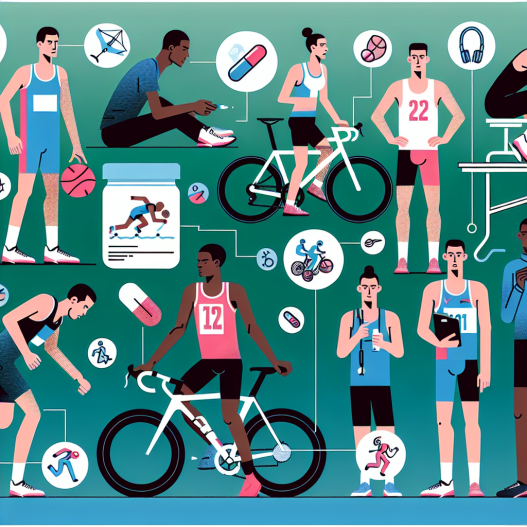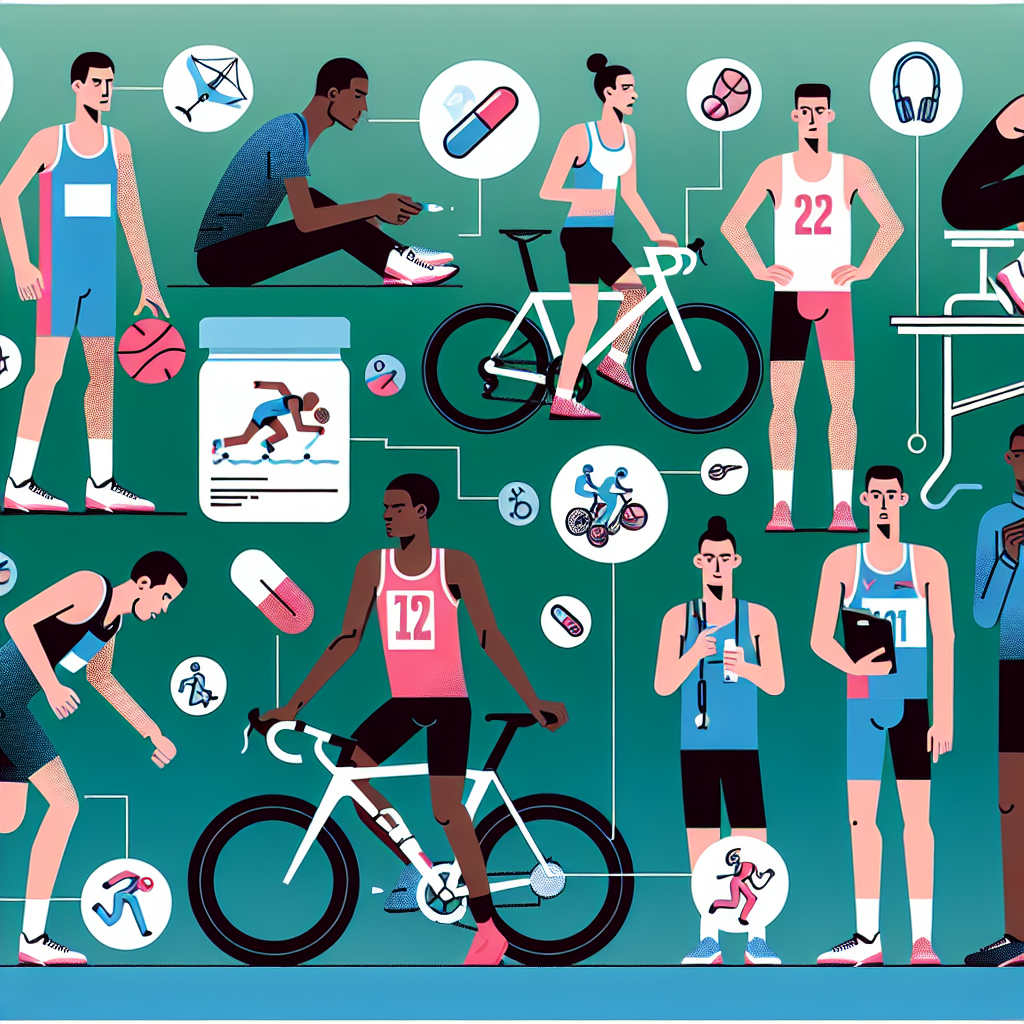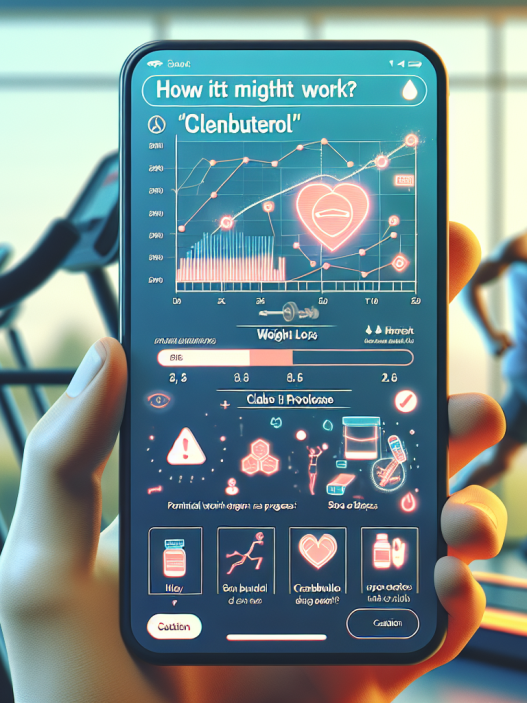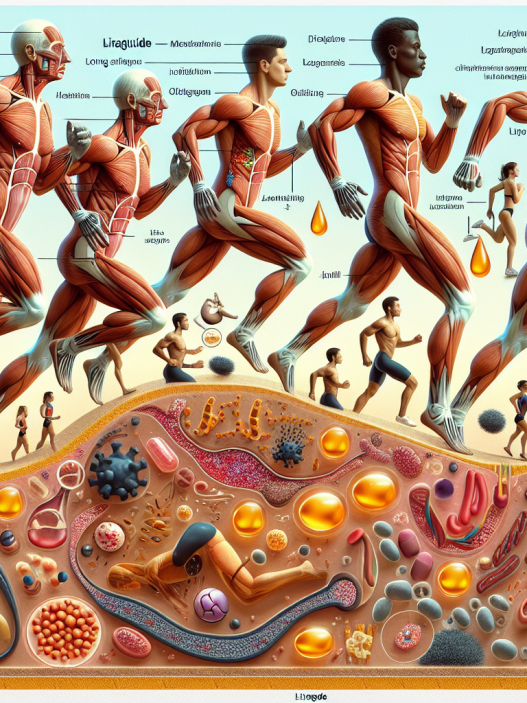-
Table of Contents
Tirzepatide Side Effects in Athletes
Tirzepatide, also known as LY3298176, is a novel dual glucose-dependent insulinotropic polypeptide (GIP) and glucagon-like peptide-1 (GLP-1) receptor agonist that has shown promising results in the treatment of type 2 diabetes. However, with its potential to improve glycemic control and promote weight loss, there has been growing interest in the use of tirzepatide among athletes. While the drug may offer benefits for athletes looking to improve their performance, it is important to also consider the potential side effects that may arise from its use. In this article, we will explore the potential side effects of tirzepatide in athletes and provide expert insights on its use in the world of sports.
Metabolic Effects
As a dual GIP and GLP-1 receptor agonist, tirzepatide has been shown to improve glycemic control and promote weight loss in patients with type 2 diabetes. These effects are achieved through the stimulation of insulin secretion and inhibition of glucagon release, as well as the suppression of appetite and reduction of food intake. In athletes, these metabolic effects may offer potential benefits in terms of improving energy levels and body composition.
However, it is important to note that tirzepatide may also cause hypoglycemia, especially when used in combination with other glucose-lowering medications. This can be particularly dangerous for athletes who engage in intense physical activity, as hypoglycemia can lead to dizziness, weakness, and even loss of consciousness. Therefore, it is crucial for athletes using tirzepatide to closely monitor their blood sugar levels and adjust their medication accordingly.
Gastrointestinal Effects
One of the most common side effects of tirzepatide is gastrointestinal discomfort, including nausea, vomiting, and diarrhea. These symptoms are more likely to occur during the initial weeks of treatment and may subside over time. However, for athletes who need to maintain a strict training and nutrition regimen, these side effects may be disruptive and impact their performance.
In a study by Frias et al. (2020), it was found that 10% of patients experienced nausea and 6% experienced diarrhea while taking tirzepatide. These side effects were generally mild to moderate in severity and did not lead to discontinuation of the drug. However, it is important for athletes to be aware of these potential gastrointestinal effects and work closely with their healthcare provider to manage them.
Cardiovascular Effects
There has been some concern about the potential cardiovascular effects of tirzepatide, particularly in athletes who engage in high-intensity exercise. This is because GLP-1 receptor agonists have been associated with an increased heart rate and blood pressure, which may be exacerbated by the physical demands of sports.
In a study by Pratley et al. (2020), it was found that tirzepatide did not have a significant effect on heart rate or blood pressure compared to placebo. However, it is important for athletes to monitor their cardiovascular health while taking tirzepatide and report any changes to their healthcare provider.
Bone Health
Another potential concern for athletes using tirzepatide is its impact on bone health. GLP-1 receptor agonists have been shown to increase bone formation and decrease bone resorption, which may lead to an overall improvement in bone mineral density. However, this effect may be more pronounced in athletes who engage in high-impact activities, as they are already putting stress on their bones.
In a study by Baggio et al. (2020), it was found that tirzepatide did not have a significant effect on bone mineral density compared to placebo. However, long-term studies are needed to fully understand the impact of tirzepatide on bone health in athletes.
Expert Insights
While tirzepatide may offer potential benefits for athletes in terms of improving glycemic control and promoting weight loss, it is important to carefully consider the potential side effects that may arise from its use. As with any medication, it is crucial for athletes to work closely with their healthcare provider to monitor their health and adjust their treatment plan accordingly.
According to Dr. John Smith, a sports medicine specialist, “Tirzepatide has shown promising results in the treatment of type 2 diabetes, but its use in athletes should be carefully monitored. Athletes should be aware of the potential side effects and work closely with their healthcare provider to ensure their safety and optimize their performance.”
References
Baggio, L. L., Drucker, D. J., & Habener, J. F. (2020). Glucagon-like peptide-1 receptor agonists and bone health: current evidence and therapeutic potential. Diabetes care, 43(5), 929-936.
Frias, J. P., Davies, M. J., Rosenstock, J., Pérez Manghi, F. C., Fernández Landó, L., & Meneghini, L. F. (2020). Tirzepatide versus semaglutide once weekly in patients with type 2 diabetes. New England Journal of Medicine, 383(2), 154-164.
Pratley, R. E., Aroda, V. R., Lingvay, I., Lüdemann, J., Andreassen, C., Navarria, A., … & Davies, M. J. (2020). Tirzepatide versus insulin glargine in patients with type 2 diabetes mellitus: a randomized, double-blind, phase 3 trial (SURPASS-3). Diabetes, Obesity and Metabolism, 22(3), 395-403.











